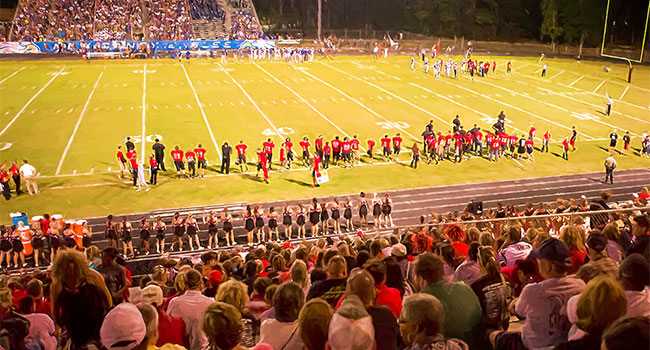
How Districts Are Addressing A Growing, Underreported Threat: Shootings at School Sporting Events
There have been at least 108 incidents of gunfire at school sporting events since 2013, according to a New York Times analysis.
- By Haley Samsel
- January 08, 2020
Over the past decade, schools across the country have spent millions of dollars on security upgrades to protect buildings and classrooms. But an investigation published by The New York Times suggests that administrators and security teams are struggling to address a growing and complex threat: gun violence during after-school activities, particularly at sporting events.
Since January 2013, there have been credible reports of gunfire at or around at least 108 school sporting events throughout the U.S., according to the Times’ analysis. About three in four of the shootings took place in the South and Midwest, where high school sports are most popular and gun laws tend to be less strict.
Sporting events, especially basketball and football games that can draw hundreds and even thousands of fans from across the community, are difficult to protect for security teams and local police. While IDs may be required to enter campus during school hours, after-hours games are open to the public, and the use of metal detectors is not widespread.
“There’s a growing problem there and we know that it’s not some spurious thing — it’s something systematic,” Justin Kurland, a researcher at the University of Southern Mississippi’s National Center for Spectator Sports Safety and Security, told the Times. “How many of these have to happen before the schools and first responders start to take this more seriously?”
Following a shooting after a preseason football game in August that injured two boys, Atlanta Public Schools Police Chief Ron Applin’s officers have focused more on the periphery of events. Officers were already inside stadiums before and during games, but people with weapons may choose to stay outside of the stadium to avoid going through metal detectors.
“In an event like this where you expect people to come and have a good time and not have any issues, it’s just one of those things,” Applin told the Times. “Anybody could get a gun into the stadium, probably.”
Kurland’s center has published a 188-page best practices guide that encourages schools to implement screening at every entrance and having police hold drills on what to do in the case of gunfire at after-school events. Students and spectators, who may have undergone active shooter drills during school hours, are often unsure of what to do in the case of a shooting at another school-related event. The guide also suggests that districts install mandatory metal detectors.
The Times noted that shootings at school games have received less media coverage than shootings during school hours despite their prevalence. Some experts attributed the disconnect to the assumption that sporting events are seen as spillover from the “normal” gun violence in areas like St. Louis, which have high rates of violence that attract less attention from local and national media.
In addition, shootings during school hours are often more deadly, with gunmen planning the attacks. Most shootings at after-school events are more spontaneous and usually take place after an argument or fight between a few people, according to the Times.
Though the shootings don’t earn the same amount of press attention, students who have been injured as a result say that more must be done to protect spectators. Jarvis Murphy, a recent high school graduate who was shot in both legs at an August shooting in Mobile, Alabama, said he is extremely cautious about going into public places and wonders what weapons may be in the crowds.
“I’ll be cautious everywhere I go now,” Murphy said, adding: “I’m scared to go back in the stadium. I’m scared to go to a football game, period.”
About the Author
Haley Samsel is an Associate Content Editor for the Infrastructure Solutions Group at 1105 Media.